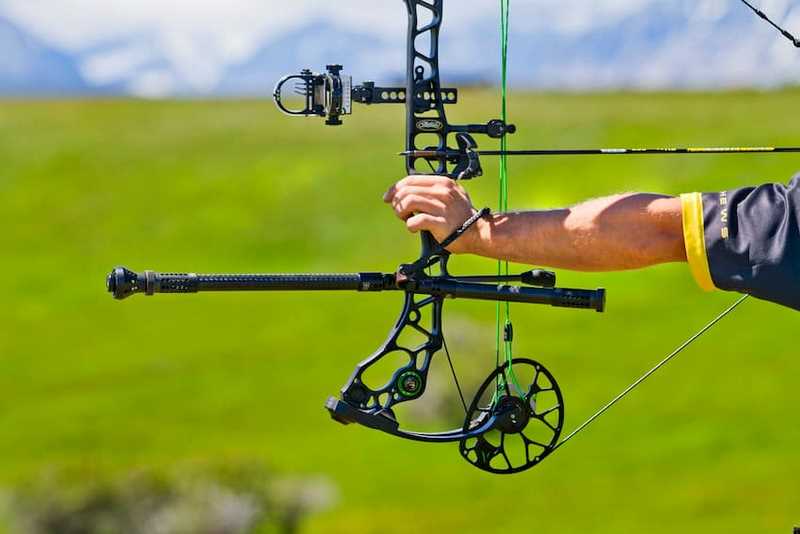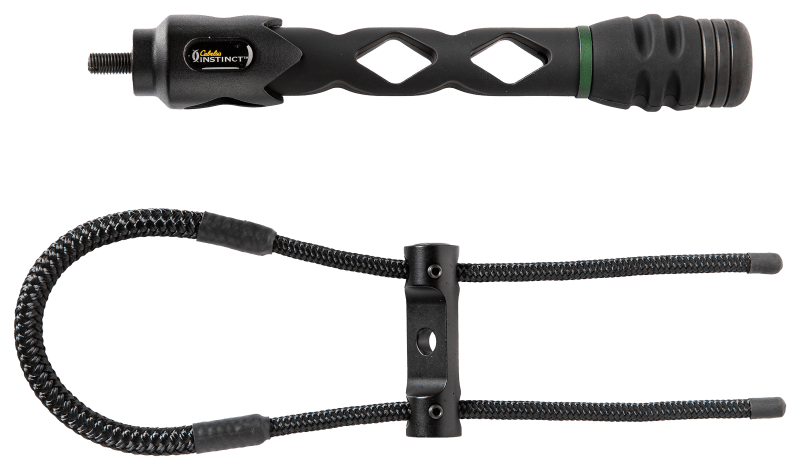Enhance Your Precision: The Duty of Archery Stabilizers
Enhance Your Precision: The Duty of Archery Stabilizers
Blog Article
The Ultimate Guide to Picking the Right Archery Stabilizer for Enhanced Precision
Archery is a sporting activity that requires accuracy and precision, and choosing the appropriate equipment is essential for accomplishing optimum outcomes. Among the numerous accessories offered, an archery stabilizer plays a significant role in boosting precision. Nonetheless, with a lot of choices on the marketplace, it can be overwhelming to figure out which stabilizer is the right suitable for your demands. In this thorough guide, we will explore the crucial elements to consider when selecting an archery stabilizer for enhanced accuracy. From locating the optimum length to comprehending the various layouts and products, we will look into every little thing you need to know to make an informed choice. Whether you are a skilled archer looking to upgrade your devices or a beginner seeking guidance, join us on this journey as we unwind the tricks to selecting the ideal archery stabilizer.
Size: Discovering the Optimal Stabilizer Length
Establishing the suitable stabilizer size is crucial when picking an archery stabilizer for ideal performance. The size of a stabilizer directly impacts the equilibrium, stability, and accuracy of the bow. A stabilizer that is also long can make the bow really feel top-heavy and difficult to control, while a stabilizer that is also short may not give sufficient stability and dampening of vibrations. Locating the best size calls for considering factors such as the archer's shooting design, bow weight, and personal choice.
A longer stabilizer, generally varying from 8 to 12 inches, can provide higher security and decrease bow torque. This is especially useful for archers that shoot with a high draw weight or those who have a propensity to torque the bow during the shot. The included size helps to distribute the weight equally and counterbalance any type of torque or activity.
On the other hand, a much shorter stabilizer, usually between 4 to 7 inches, uses extra maneuverability and quicker reaction. It is preferred by archers that shoot with a reduced draw weight or those who need more movement, such as seekers or 3D shooters. The shorter size enables for easier motion via limited rooms and faster changes.
Ultimately, the optimal stabilizer length is a matter of personal choice and shooting design. It is advised to trying out different lengths and observe the effects on stability and accuracy. Consulting with knowledgeable archers or experts can likewise supply useful insights and referrals.
Weight: Determining the Appropriate Stabilizer Weight
After thinking about the ideal stabilizer length, the next essential aspect to take into consideration when picking an archery stabilizer is establishing the ideal stabilizer weight - archery stabilizer. The weight of the stabilizer plays a crucial role in enhancing accuracy and stability during the shot
The weight of the stabilizer influences the equilibrium and control of the bow. A much heavier stabilizer can offer enhanced stability and control, especially for shooters with a tendency for shaky hands or irregular shots. It helps to absorb the vibrations and recoil created by the bow, lowering torque and lessening the impact on the arrow's trip.
On the other hand, a lighter stabilizer permits for a quicker and extra responsive bow. It can be beneficial for shooters who focus on ability to move and speed over stability. Lighter stabilizers also lower exhaustion during long shooting sessions or competitors.
To identify the suitable stabilizer weight for your needs, it is essential to consider your capturing style, physical toughness, and bow configuration. Try out various weights and observing the effect on your capturing performance is key to discovering the perfect equilibrium.
Eventually, the optimal stabilizer weight will certainly vary for every individual archer. It is advised to start with a modest weight and make adjustments based upon personal choice and shooting results. Remember, the objective is to accomplish a regulated and steady shot, while additionally maintaining comfort and ease of usage.
Products: Choosing the Right Materials for Sturdiness and Efficiency
When selecting an archery stabilizer, it is vital to carefully take into consideration the materials used in its building to ensure toughness and optimize efficiency. The choice of materials can substantially influence the overall quality and efficiency of the stabilizer.
One of one of the most generally used materials for stabilizers is carbon fiber. Carbon fiber provides a high strength-to-weight proportion, making it light-weight yet unbelievably solid. This material lowers and soaks up vibrations bow torque, leading to enhanced security and precision. In addition, carbon fiber stabilizers are immune to temperature changes and are much less most likely to warp or bend with time.
One more prominent product for stabilizers is light weight aluminum. Aluminum stabilizers are understood for their resilience and rigidity. They offer outstanding dampening capabilities, reducing the amount of shock and vibration transferred to the shooter's hand. Light weight aluminum stabilizers additionally supply a wide range of personalization options, allowing archers to readjust the weight and size to fit their preferences.
Some stabilizers are constructed making use see here now of a combination of materials. As an example, a stabilizer might have a carbon fiber core wrapped in a light weight aluminum shell. This crossbreed design combines the most effective qualities of both products, supplying optimal security, longevity, and efficiency.
Design: Understanding the Various Stabilizer Designs and Their Results
Considering the products utilized in archery stabilizers, it is crucial to now look into the different designs of stabilizers and their corresponding effects. The style of an archery stabilizer plays a critical role in boosting accuracy and minimizing resonance throughout the shot. There are several various layouts offered in the market, each with its very own unique attributes.

One more popular layout is the side bar stabilizer. This style involves attaching a brief pole to the side of the bow, alongside the primary long pole. Side bar stabilizers aid in counteracting the weight of accessories, such as sights or quivers, and offer added stability to the bow.
Some stabilizers come with flexible weights. These stabilizers enable archers to fine-tune the equilibrium and feel of their bows by including or getting rid of weights. This function is particularly useful for archers who prefer a specific weight distribution or intend to trying out different setups.
Furthermore, some stabilizers integrate moistening technology to decrease resonance and sound. These stabilizers typically have built-in dampeners or make use of products that soak up vibrations, causing a smoother and quieter shot.

Devices: Exploring Added Accessories for Enhanced Stability
To further enhance security in archery, added accessories can be used. These devices are developed to function in combination with the archery stabilizer to offer an even better degree of stability and precision. One such device is the V-bar or the side stabilizer place. This accessory enables the accessory of a 2nd stabilizer, which assists to decrease and balance the bow torque. By distributing the weight equally on both sides of the bow, the V-bar helps to reduce any unwanted activity throughout the shot.
One more accessory that can improve stability is a bow sling. A bow sling is a band that connects to the bow and enables the archer to keep a kicked back hold on the bow handle without the fear you can try these out of dropping it (archery stabilizer). This kicked back grip helps to lower muscle mass tension and enables a much more stable and constant shot
Furthermore, a stabilizer weight system can be used to tweak the equilibrium and stability of the bow. These weight systems generally include small weights that can be included or gotten rid of from the stabilizer to adjust the balance factor of the bow. By discovering the optimum balance point, archers can achieve a site web much more exact and steady shot.
Verdict
In verdict, picking the appropriate archery stabilizer involves taking into consideration aspects such as size, weight, materials, style, and additional devices. The optimum stabilizer size and weight will depend on specific preferences and shooting design.
Identifying the excellent stabilizer size is critical when selecting an archery stabilizer for ideal efficiency. A stabilizer that is as well long can make the bow really feel top-heavy and tough to manage, while a stabilizer that is too brief may not provide adequate security and dampening of resonances - archery stabilizer.Taking right into account the products made use of in archery stabilizers, it is crucial to currently dive into the different styles of stabilizers and their corresponding impacts. Side bar stabilizers aid in counteracting the weight of accessories, such as views or quivers, and give additional security to the bow
These weight systems typically are composed of small weights that can be included or eliminated from the stabilizer to readjust the equilibrium point of the bow.
Report this page